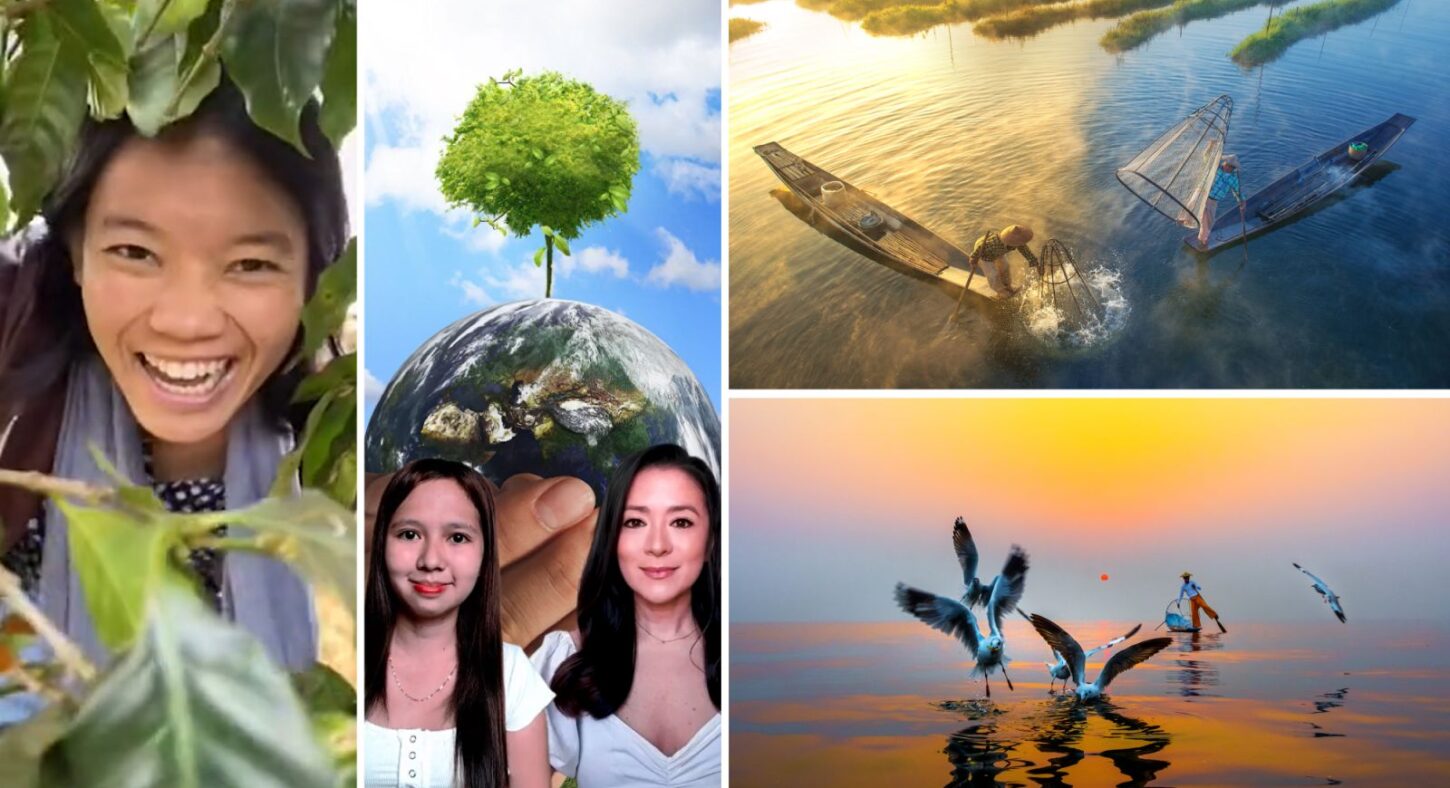Winners of ASEAN’s Sixth Zooming in on Biodiversity bared

(L-R) Pavina Vongsouvanh, Lao PDR; Maria Fe Felicilda, Philippines; Fishing the Traditional Way by Kyaw Kyaw Will, Myanmar (top); Together by Aung Chan Thar, Myanmar (bottom)
31 January 2022— With the ongoing pandemic, photographs of nature have the power to inspire and cultivate a deeper appreciation for biodiversity and its protection.
On Monday afternoon, the ASEAN Centre for Biodiversity (ACB) announced the winners of the ASEAN-wide photography competition, Zooming in on Biodiversity via Zoom and Facebook live, after a thorough evaluation of photo and digital content entries.
Organised by the ACB in partnership with the European Union (EU) through the Biodiversity Conservation and Management of Protected Areas in ASEAN (BCAMP) Project, the competition was opened in November 2021 to all amateur and professional photographers and creatives in the ASEAN region.
It is part of a regional campaign #WeAreASEANBiodiversity campaign, which aims to raise awareness and mobilise support for biodiversity conservation in the region.
“(An image) can tell us a compelling story and even bring us to places we haven’t seen, heard, or experienced. Such power of photography has become even more important today, as our movement continues to be limited due to the continuing threat of COVID-19 and its emergent variants,” ACB Executive Director Theresa Mundita Lim said in a recorded video message.
She said the photographs of land- and seascapes, plants, and animals are reminders of the essential role of biodiversity in our daily survival.
The sixth staging of Zooming in on Biodiversity has two categories: the general category, #WeAreASEANBiodiversity: I am part of the solution, which focuses on the richness of ASEAN’s rich biodiversity, and the active role of people, as part of nature, as a vital part of the solution to conserving this rich natural heritage, and the ASEAN Heritage Parks (AHP) special category, which highlights the natural and cultural richness of the 50 AHPs.
The finalists were judged following a set of criteria: relevance, composition, creativity, and technical excellence. The panel of judges was composed of ACB’s Lim; Ileana Miritescu, programme manager of the EU Delegation to the Philippines; and professional photographer Sheryl Aguiba.
Aung Chan Thar of Myanmar bagged the grand prize in the general category and the People’s Choice Award for the AHP category.
The second place and third place of the general category went to Kyaw Zay Yar Lin of Myanmar and Arturo B. De Vera Jr. of the Philippines, respectively.
Aung Kyaw Zaw of Myanmar is the People’s Choice Awardee garnering the highest number of likes on Facebook.
For the AHP category, Kyaw Kyaw Winn of Myanmar won first place while Tran Viet Linh of Viet Nam and Danny Ocampo of the Philippines came in second and third.
Meanwhile, in, the #WeAreASEANBiodiversity Tiktok Challenge, Pavina Vongsouvanh of Lao PDR won the Creativity Award. Maria Fe Felicilda of the Philippines had the most liked entry and bagged the People’s Choice Award.
Winners took home prizes between USD 300 and USD 1500.
“We saw powerful messages, stunning landscapes, and superb wildlife captured in your photos. They show us the many creative perspectives highlighting the natural and cultural richness of ASEAN Heritage Parks and interactions of humans with biodiversity,” Miritescu of EU said in a video message.
Moderated by Antoinette Taus, UN Environment Programme Goodwill Ambassador and one of the voices of the ACB’s #WeAreASEANBiodiversity campaign, the awards ceremony also featured one of the first environment champions hailed as ASEAN Biodiversity Heroes.
ASEAN Biodiversity Hero of Cambodia Sophea Chhin, one of the founders of Birds of Cambodia Education and Conservation, in a conversation with Taus, talked about his passion for photography and wildlife conservation and his community’s appreciation for wildlife.
“Before, a lot of people (in my community) were using slingshots to shoot birds. Wildlife was bushmeat for them then. It changed when they started using a camera,” Sophea Chhin said.
